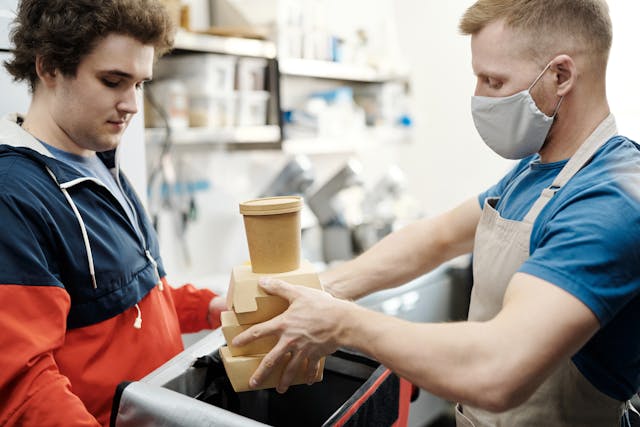The surge in digital food ordering has transformed how we dine, with projections showing 2.5 billion users by 2029, according to Statista. This shift isn’t just about convenience – it’s reshaping entire business models and consumer behaviors.
Market giants like UberEats and DoorDash aren’t just dominating; they’re proving the sector’s explosive potential. UberEats’ staggering $12.2 billion revenue in 2023 speaks volumes, while DoorDash’s 31% year-over-year growth to $8.63 billion demonstrates the market’s momentum.
But here’s what’s fascinating: despite these heavyweight players, the market remains remarkably open. From the U.S. quintet of UberEats, DoorDash, Caviar, Grubhub, and Postmates to international powerhouses like Just Eat and China’s Meituan, there’s still room for innovation and new entrants.
To create a delivery application in this dynamic environment requires careful planning and market analysis. The secret? Grand View Research points to surging smartphone adoption and enhanced network connectivity as key drivers pushing the market toward an estimated $505.5 billion by 2030.
For entrepreneurs eyeing this space, multiple revenue streams await exploration. While the traditional 30% commission model (as seen with UberEats) remains popular, forward-thinking platforms are diversifying through delivery fees, advertising partnerships, and monthly subscription passes.
Industry insiders suggest a hybrid approach to monetization. “Don’t put all your eggs in one basket,” seems to be the prevailing wisdom, with successful platforms combining commission fees, delivery charges, and promotional revenues.
The real opportunity lies in addressing the delicate balance between profitability and partner satisfaction. While high commission rates can strain restaurant relationships, innovative fee structures and value-added services can create sustainable partnerships.
For businesses contemplating market entry, the roadmap is clear: focus on platform development that prioritizes user experience, establish fair partnership terms, and implement diverse revenue streams. The food delivery revolution isn’t just continuing – it’s accelerating.
Innovation in Food Delivery: The Next Digital Frontier
In today’s fast-paced market, launching a food delivery platform requires strategic thinking about three distinct user experiences: customer-facing interfaces, courier operations, and restaurant management systems. Industry experts suggest focusing on essential features that drive engagement and efficiency.
For customers, the foundation lies in streamlined registration, intuitive restaurant browsing, and secure payment integration. Modern platforms distinguish themselves through smart features like real-time GPS tracking, instant chat support, and personalized push notifications for order updates.
Courier interfaces prioritize functionality with order management systems, delivery status updates, and comprehensive payment tracking. Meanwhile, restaurant dashboards focus on order processing, notification systems, and invoice generation.
The market presents various opportunities beyond traditional restaurant delivery. Grocery delivery services are gaining traction, while B2B platforms connecting restaurants with suppliers represent an untapped segment. Dark kitchens – delivery-only establishments – are emerging as cost-effective alternatives to traditional dining.
Development typically spans 6.5 months, with successful platforms incorporating multiple revenue streams. Market leaders leverage commission fees (typically up to 30%), delivery charges, and advertising revenues from featured restaurants.
Each platform type demands specific features:
- Restaurant aggregators need robust filtering systems and multi-vendor management
- Grocery services require inventory tracking and specialized delivery scheduling
- Full-service apps combine both, demanding sophisticated categorization
- B2B platforms focus on supplier-restaurant communication and logistics
- Dark kitchen systems emphasize order management and analytics
The key to success lies in identifying specific market needs and implementing targeted solutions. Whether serving urban professionals or connecting businesses, successful platforms prioritize user experience while maintaining operational efficiency.
Development approach dramatically impacts both timeline and budget. Using React Native allows simultaneous iOS and Android development, significantly reducing resource requirements while maintaining platform-specific functionality.










